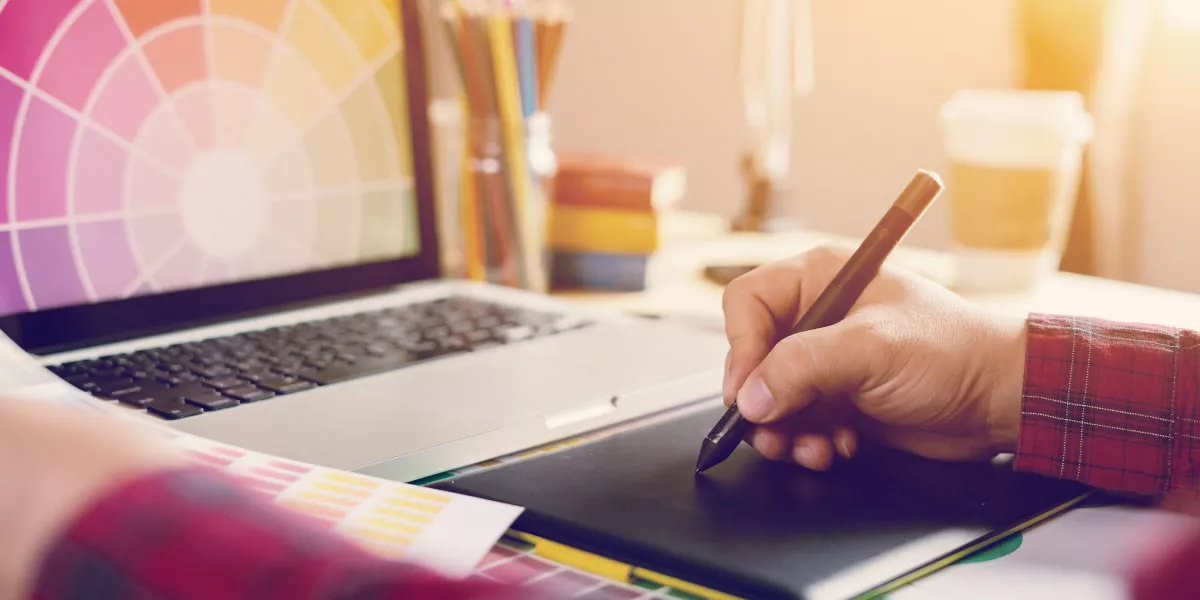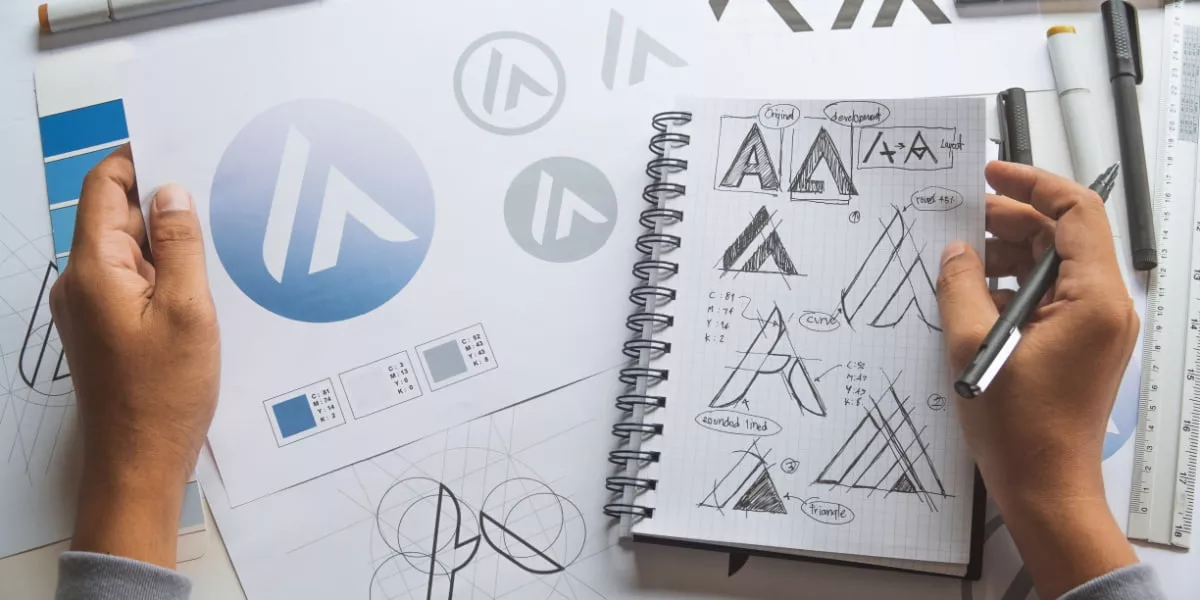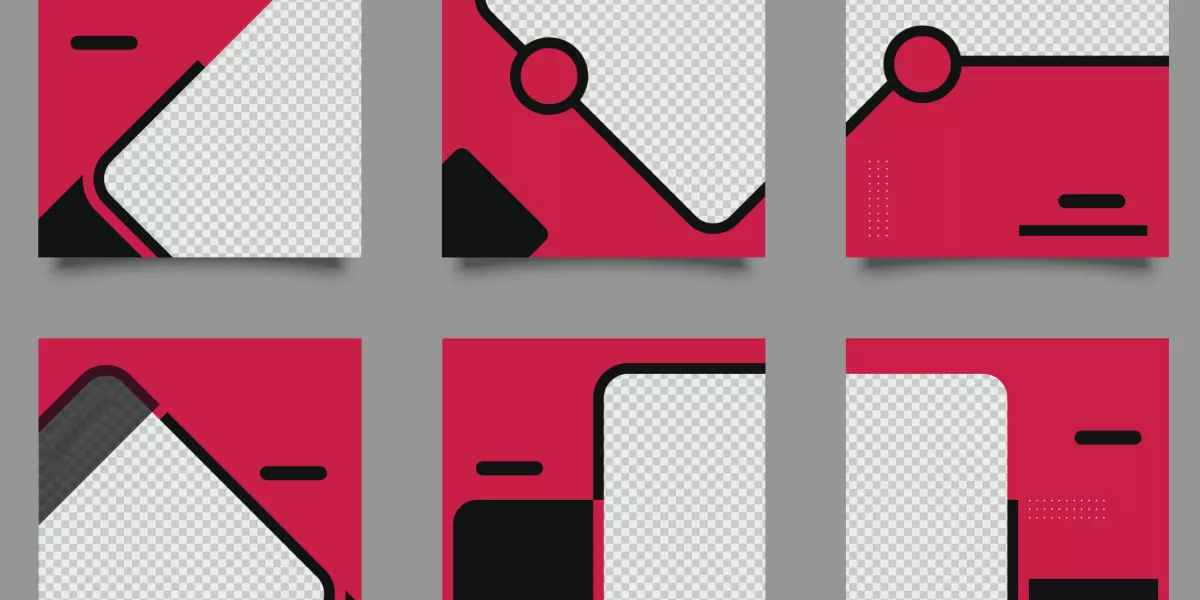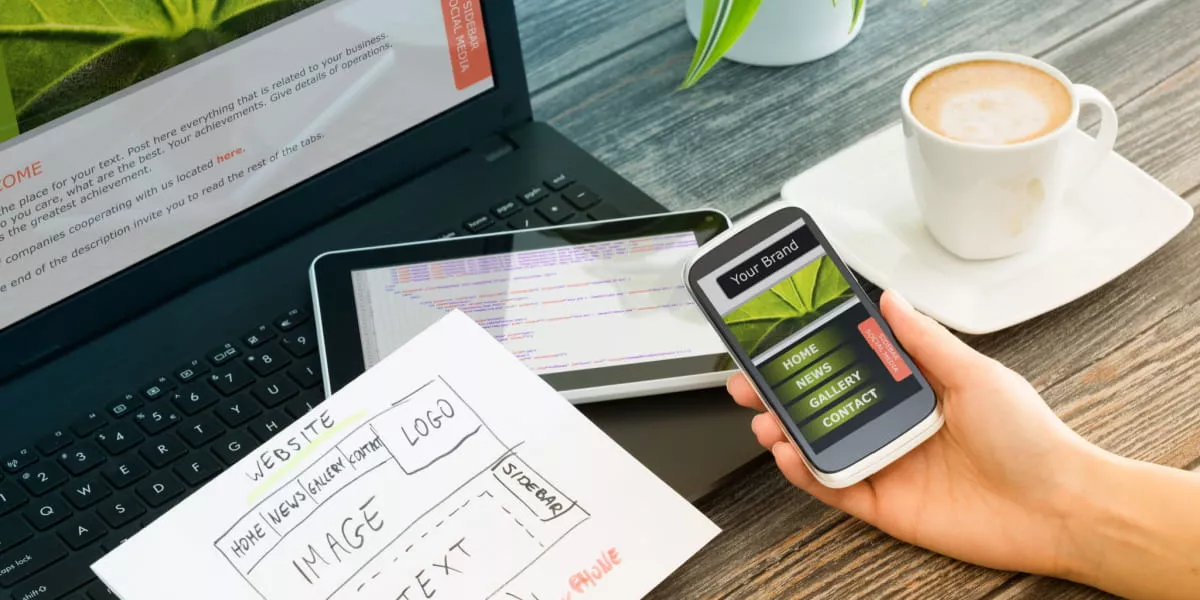Using technology to create brand identity

Having an effective brand identity is essential to any successful business, but creating one can be a difficult and time-consuming endeavour.
Fortunately, with the right knowledge and use of today's technology, businesses can create strong brands in ways never thought possible before.
In this blog post, we'll discuss how advances in technology have transformed the way businesses build their identities - from utilising automation tools to crafting innovative customer experiences.
We'll explain exactly how these tactics help you establish a unique presence that will make your mark among competitors and increase customer loyalty.
Finally, we'll provide tips on how best to harness the power of current technologies so that you can craft powerful brand identities quickly and effectively.
Why is it important to have a digital brand identity?
In today's digital age, consumers are bombarded with an endless stream of brands competing for their attention online - therefore it's crucial to have a strong and recognisable brand identity that will set your business apart from your competitors.
Your brand identity is what helps you build trust with your audience and strengthens your position in your respective industry.
Your brand identity is also essential for digital marketing - it is what you use to establish cohesive and consistent messaging across all of your marketing channels from your website to your Facebook page. A strong brand identity can help you attract new customers, retain existing ones and build a loyal following.
Successful brands have easily identifiable and strong brand identities. Here are two examples:
- The Ordinary: This skincare brand is associated with being straightforward and direct. Their monochrome packaging and simple product names feel like something straight out of a science lab. The simplicity and transparency is easily recognisable and part of what makes it so popular and trusted as an effective product
- Casper: The mattress startup has a very consistent visual identity that is widely recognisable. The brand's personality is demonstrated in its hand-drawn illustrations and soothing colour scheme, which extends across its digital design, packaging and products
Technology's role in brand identity design
Technology can be a powerful tool in building your brand identity design. There are a plethora of digital tools and software, both paid and free, now available to support the process of creating logos, designing marketing materials, creating fonts and more for your business.
The foundation of any successful branding strategy lies in having a clear brand identity. This involves understanding your target audience and having a brand story that connects with your customers. This will set the stage for establishing a clear visual identity for your business.
Use of digital tools and software for creating logos, and designing marketing materials
Emerging technologies offer a huge variety of possibilities for creating and enhancing your brand identity design. Make sure you consider your target audience, industry, budget and goals before venturing into the process.
Once you have your brand's visual identity secured, you can use it across both your digital and physical marketing materials.
For instance, you can use Brother's P-touch Editor label design software to create professional-looking labels that feature an array of design elements. A major drawcard for businesses is that this powerful labelling software comes bundled free of charge with Brother's range of label printers.
This is particularly useful if you're labelling customer-facing products with your business' logo, barcodes, QR codes, or other customised label messaging.
Managing brand consistency
Creating a design system is important so that you maintain a consistent and unified brand identity across your platforms. Your design system may include logos, colours, fonts, icons or templates to ensure visual and functional consistency.
Many businesses maintain a brand portal to act as a central database for storing, managing and distributing your brand assets, brand guidelines and best practices. Having a central hub for all these resources can help improve the implementation of your brand identity design by providing easy and secure access to both internal and external stakeholders.
Cost-effectiveness of using technology compared to traditional branding methods
Technology has made it possible for us to reach out and access tools that we never thought possible before.
Depending on your business needs and budget, using online tools as opposed to hiring a designer may help you keep costs down.
However, working with a designer means you can explain your ideas, provide feedback and give them a much clearer picture of your ideal logo. The cost of working with a designer will depend on the designer's skill, and will also depend on if they bill hourly or by project. While someone with less experience will charge less, you may not get the outcome you are looking for.
Tools and resources for brand identity design
There are many elements you need to consider when it comes to creating your brand's identity. However, creating everything you need can be very overwhelming, especially if you don't have much design experience.
These days, there are tools and resources available to help businesses create everything from your logo to a custom palette, to your very own unique font. Below are a few examples of tools to get you started:
Graphic design tools you need to know about
Graphic design software can be used to create any visual element from a poster, to a website banner or Instagram post. There are beginner-friendly options with pre-made templates for those with little to no experience; as well as options for those looking to create unique design elements and graphics from scratch.
Here are some graphic design software options to look into:
- Adobe Creative Cloud (Paid): Adobe's suite of graphic design apps and services, such as Illustrator, InDesign and Photoshop, includes thousands of templates to support the creation of your brand identity. While it has a comprehensive suite of powerful tools, it can be expensive for individuals and small businesses, with some features requiring a steep learning curve
- Canva (Free/Paid): Canva offers professional, easy-to-customise templates for creating and editing images, infographics, social media posts, posters, logos ads and more, making it excellent for beginners with little design experience. While it includes a huge array of templates, users can't make their own unique design elements
- Figma (Free/Paid): Figma is an online design tool for creating, sharing and testing digital art designs for mobile apps, websites and other assets. The cloud-based software can be used by solo designs and teams, allowing multiple people to collaborate on the same project
- Inkscape (Free): Inkscape is a free open-source design tool for creating vector images, allowing you to create professional-grade designs. While there is a learning curve for beginners, tutorials are available to teach you the basics of vector design and graphics
Logo generators that can help your brand stand out
A logo should consider your target audience, industry trends and the message you want to convey. It should be instantly recognisable and be a visual representation of your brand.
There are many online logo makers that offer templates for you to create a meaningful logo. Using an online logo maker is especially useful for those that don't have much design experience.
Here are some examples of logo makers available online:
- Adobe Express Logo Maker (Free): Adobe will create a logo based on a series of questions related to your business. It is simple to use, with many logo choices and requires minimal effort, however there are not as many options for customisation
- Hatchful (Free): A free logo maker available through Shopify. By answering a few questions about your business, Hatchful allows you to view several variations of your chosen logo with different font and colour combinations, however, there are no dedicated customisation tools
- DesignEvo (Free/Paid): DesignEvo has a vast selection of logo choices and offers extensive customisation options. Although high-resolution downloads are not available with the free version, purchasing the logo package gives you all the font files, different file types, copyright ownership and the ability to tweak your logo as your brand evolves
- Looka (Paid): Powered by artificial intelligence, it walks you through a series of steps to determine your preferences, providing you with over 75 designs for you to pick the best option. Additional features are also available after creating your logo, including business cards, website templates and a brand guidelines document making it great for those with little design experience
Read our guide on small business grants for technology
Online colour palette tools for consistent results
Colours can prompt particular emotions and memories, making them powerful tools for communicating your brand personality. In fact, using your brand colour consistently has been shown to improve brand recognition by 80%.
Below are some resources to create your very own brand colour palette:
- Adobe Color: Adobe Color is one of the best colour palette generators for professionals. Users are able to customise their chosen colour combination and even apply a ‘colour harmony’ rule to find new colour schemes that match a particular shade
- ColorSpace: ColorSpace is best suited for those who already have a colour in mind that they want to base their choice off. Users enter their chosen colour and are given many colour combination suggestions matched to the original colour
- Khorma: Khroma uses machine learning to help you find and generate unique colour palettes based on your brand. Users go through a process of choosing a set of 50 colours, machine learning is then used to create a colour palette based on your unique preferences
- Coolors: This colour palette generator provides an infinite amount of colour palette suggestions as soon as you open the website. Once you find a combination of colours you like, users can rearrange and adjust the colours as needed. Coolors also allows you to create a colour scheme based on an uploaded image
Typography resources for a professional look
Just as colour can represent a feeling or visually convey a message, typography can give off particular feelings about what your business stands for. For instance, Serif fonts can be more conventional but are considered easy to use for longer-form content. Script font seems handwritten and can seem more personal, but can differ from stylish calligraphy to fun and modern brush lettering.
Check out the below examples for finding the right font for your brand:
- Google Fonts (Free): Google Fonts has an extensive library of free, open-source typefaces. It has an easy-to-use search function allowing users to quickly find and download the best typeface for their design
- Adobe Fonts (Paid): Available with an Adobe Creative Cloud subscription, Adobe Fonts has a large selection of high-quality typefaces. You can sync fonts across Adobe applications, making it easy to incorporate them into your other designs
- Glyphs (Paid): Glyphs is a font design software that helps you create your own custom typefaces. Using the platform, you're able to design, edit and export fonts
Maintaining brand consistency across social media
Brand consistency is about making sure that your brand identity is communicated in a uniform and recognisable way. This is especially important on social media where customers and brands have the most direct line to each other - brands convey their personality and messages in real time to their audience base, while users can directly communicate feedback.
Having brand consistency is important in creating user recognition. Your customers should be able to easily find you and information about your products or services. This creates a positive experience for your audience, increasing trust, awareness and preference.
Tips and tricks for maintaining brand consistency
Whether you choose to have a presence on Facebook, Instagram, TikTok, YouTube, X (formerly Twitter) or any combination of them. Keeping track of your content across even just one of those platforms can be difficult, let alone several. Businesses should look at what tools and resources they can leverage to ensure their brand identity is consistent across the board.
Below are a few tips to help you maintain brand consistency across your social media platforms:
Use a content management system
Businesses can use a content management system (CMS), such as HubSpot and WordPress, to help you create, edit, publish and manage your digital content.
It acts as a central place to store, organise and update content assets such as logos, images, videos, colours and copy. A CMS can also help you enforce brand consistency by allowing you to set rules, templates and workflows for content creation and distribution.
Create a design and style guide
A style guide is a document that clearly defines and details the visual and tonal aspects of your brand identity. It can serve as a reference, as well as a rule book for your business and any external collaborators who may work on your brand assets.
If you work with social media managers, content creators or designers - a style guide will help maintain consistency and quality in any design work, as well as avoid any confusion and inconsistencies among stakeholders or customers.
Prepare design templates
Having templates ready to go is a great way to keep consistency across your platforms, while also helping to create content very quickly.
Maintaining a social media presence often means creating content quickly, responding to things in real-time, or providing updates to followers as fast as possible. However, rushing to create visuals from scratch each time could easily lead to mistakes and inconsistencies in your content. Having templates already approved and ready to go means all you need to do is update the copy.
Beyond social media, design templates can be used across all your physical documents as well. Owning a quality inkjet printer like the MFC-J6955DW means you can print customer or client-facing assets up to A3 in size. The printer's Inkjet MaxiDrive Printhead technology delivers incredibly professional print jobs for everything from pamphlets to in-box brand offers.
Let technology help you create a powerful brand identity
There is a wide variety of tools and technology available for businesses looking to create or update their brand identity.
The right options will depend on your individual business, taking into account your design skill levels, business size, audience and growth goals into account.
Online tools and technology can decrease timelines and improve efficiency so you can ultimately save your business time and money, which is especially important among small businesses that are just starting.
Brother has a range of products and tech solutions designed to support productivity for SMEs. Contact us today to learn more about how Brother's innovative products can support your business goals.

Resource Library
Be the first to receive exclusive offers and the latest news on our products and services directly in your inbox









.jpg?h=720&iar=0&w=1920&rev=36358aeeea934b07bce65a5d230d3519)